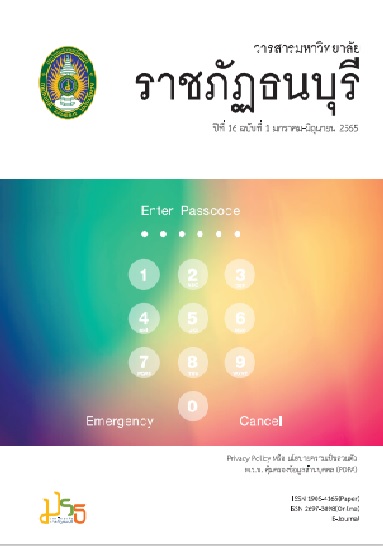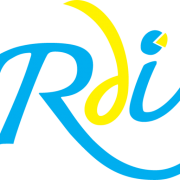A Study on China’s Overcapacity Problem Solving with Belt and Road Initiative: Case of the Steel Industry
Keywords:
overcapacity problem, Belt and Road Initiative, steel industryAbstract
The objectives of this research were 1) to analyze the origins of the overcapacity problem in the steel industry in the People’s Republic of China; 2) to study the solutions to the steel industry’s problems under the Belt and Road Initiative, and 3) to study the potential movement of the steel industry of the People’s Republic of China under the Belt and Road Initiative in Thailand. This qualitative research studied and collected insights data to build knowledge and understanding. The quantitative data was also presented to support the presentation of the study results covering a variety of relevant dimensions. The results revealed that 1) the expansion of the industrial sector according to the economic and social development plan of China, as well as the spread of urbanization to various areas, were crucial drivers of the oversupply of the steel industry in the People’s Republic of China; 2) an apparent connection between the Belt and Road Initiative and solution to the problem of overcapacity in the steel industry of the People’s Republic of China was found. Furthermore, there was an apparent movement in the steel industry under the Belt and Road Initiative pushed by the government in the international market. For example, the increase in steel consumption among the countries along the Belt and Road through transport and infrastructure development; 3) China will expand the steel industry value chain to the countries along the route, or even Thailand. However, the Belt and Road Initiative could have a massive impact on Thailand’s steel industry due to the opportunities created by the support of the Chinese government under the Belt and Road Initiative.
Downloads
References
เกรียงศักดิ์ เจริญวงศ์ศักดิ์. (2561). เส้นทางสายไหมใหม่กับเศรษฐกิจโลก. ค้นเมื่อ 13 กันยายน 2564, จาก https://www.bangkokbiznews.com/blog/detail/645789.
รติมา คชนันทน์. (2561). การวิเคราะห์ “เส้นทางสายไหม” ในศตวรรษที่ 21 กับโอกาสของไทยกรุงเทพมหานคร: สำนักวิชาการสำนักงานเลขาธิการสภาผู้แทนราษฎร.
สมบัติ ธำรงธัญวงศ์, จุฬาภรณ์ ขอบใจกลาง, และหลี่ เหรินเหลียง. (2559). ความสัมพันธ์เศรษฐกิจไทย-จีน ภายใต้การเปลี่ยนแปลงของเศรษฐกิจโลก. วารสารพัฒนาสังค., 18(2), น.127-154.
Balhuizen, A. (2017). China’s BRI, episode two: a vision encased in steel. Melbourne: BHP.
Bao, X. (2014, December 09). “The belt and road” strategy will benefit related 65 countries and the plan will release soon. Retrieved September 13 2021, from http://News.hexun.com/2014-12-09/171223823.html
Bērziņa, Č. (2016, July 28). BRI Instead of OBOR – China Edits the English Name of its Most Ambitious International Project. Retrieved September 18 2021, from http://liia.lv/en/analysis/briinstead-of-obor-china-edits-the-english-name-of-its-most-ambitious-internationalproject-532.
Energy Transitions Commission (ETC). (2019, November). CHINA 2050: A FULLY DEVELOPED RICH ZERO CARBON ECONOMY. [Online]. Retrieved September 18 2021, from https://www.energy-transitions.org/publications/china -2050-a-fully-developed-rich-zero-carbon-economy.
Feng, M. & Wang, Z. (2012). The analysis of Chinese steel industry production efficiency based on the listed companies. Chinese Journal of Management. 2012(3), pp. 371–375. (In Chinese)
Gary, T. (2013). How to Do Your Research Project: A Guide for Students in Education and Applied Social Sciences. Newbury Park, California: SAGE Publications.
Gilbert, N. (2008). Researching Social Life. United Kingdom: The Centre for Research in Social Simulation.
Han, G. G. (2013). The development situation and countermeasures of China’s current overcapacity. Science & Technology for Development. 2013(6), pp. 79-84.
Hu, R. T. (2016). Analysis of the Causes of Overcapacity and Supply-side Factors of Resolving. Modern Economic Research. 2016(2), pp. 5-9.
Huang, S. (2015, October 13). The import and export of China and the “the belt and road” related countries are about 4.5 trillion RMB in the first three quarters of 2015. Retrieved August 7 2021, from http://economy.gmw.cn/2015-10/13/content_17329594.htm.
Huang, Z. P. (2017, October 18). Summary of Xi Jinping’s three-hour Communist Party congress speech. Retrieved August 7 2021, from https://qz.com/1105337/chinas-19th-party-congress-your-five-minute-summary-of xi-jinpings-three-hour-speech.
Kim, C. D. (2017). Chinese Steel Moves along the One Belt, One Road. Asian Steel Watch. 2017(3), pp. 78-87.
Li, X. S., Zhao, C. Y. & Nie, J. (2017). Foreign investment and heterogeneous capacity utilization of enterprises. The Journal of World Economy. 40(5), pp. 73-97.
Lin, C. & Bai, L. (2010). The long-run demand of the Chinese steel: impacts and policy choices. Economy and Management Journal. 2010(1), pp. 35-40.
Liu, H. M. & Song, L. G. (2012). Steel industry development and transformation in China: an overview. In Liu and Song (Ed.), The Chinese Steel Industry’s Transformation Structural Change, Performance and Demand on Resources (pp. 1-16). Northampton: Edward Elgar Publishing.
Lu, B. L. & Lu, R. (2016). Five Views about Current Overcapacity in China. Finance and Economics. 2016(10), pp. 57-67.
National Development and Reform Commission, Ministry of Foreign Affairs & Ministry of Commerce of the People’s Republic of China. (2015, March). Vision and Actions on Jointly Building Silk Road Economic Belt and 21st Century Maritime Silk Road. Retrieved August 7 2021, from http://english.www.gov.cn.
Steel Industry Coalition. (2016, June 30). ‘Report on Market Research into the Peoples Republic of China Steel Industry Part 1’. Retrieved September 18 2021, from https://www.steel.org/wp-content/uploads/ 2020/11/Steel-Industry-Coaliton-Full-Final-Report-06302016.pdf.
World Steel Association. (2021). January 2021 crude steel production. [Online]. Retrieved October 30, 2021, from https://worldsteel.org/media-centre/press-releases/2021/january-2021-crude-steel-production/
World Steel Association. (2021). World Steel in Figures 2021 now available. Retrieved October 30, 2021, from: https://worldsteel.org/media-centre/press-releases/2021/world-steel-in-figures-2021-now-available/
Xu, Z. R. & Song, X. N. (2016). Supply-side structural reforms force companies to “go global” to resolve excess capacity. Overseas Investment & Export Credits. 2016(2), pp. 5-8.
Yu, C. J. (2021). Has China’s foreign contracted projects promoted the export of steel products? Based on the study of the mediating effect of infrastructure quality in countries along the “Belt and Road”. Journal of Hubei University (Philosophy and Social Science). 48(2), pp. 144-153.
Yu, L. & Zhang, J. (2014). The fundamental cause and outlet of China’s overcapacity: non-market factors and its three-step strategy. Reform. 2014(2), pp. 40-51.
Zhang, L. (2013, March 26). Analysis: From ‘Cat Theory’ to ‘Shoes Theory’. Retrieved August 7 2021, from https://www.bbc.com/zhongwen/simp/china/2013/03/130326 _ana_dengxiaoping_xijinping_theory
Downloads
Published
How to Cite
Issue
Section
License

This work is licensed under a Creative Commons Attribution-NonCommercial-NoDerivatives 4.0 International License.
บทความที่ได้รับการตีพิมพ์เป็นลิขสิทธิ์ของ มหาวิทยาลัยราชภัฏธนบุรี
ข้อความที่ปรากฏในบทความแต่ละเรื่องในวารสารวิชาการเล่มนี้เป็นความคิดเห็นส่วนตัวของผู้เขียนแต่ละท่านไม่เกี่ยวข้องกับมหาวิทยาลัยราชภัฏธนบุรีและบุคลากรท่านอื่นๆในมหาวิทยาลัยฯ แต่อย่างใด ความรับผิดชอบองค์ประกอบทั้งหมดของบทความแต่ละเรื่องเป็นของผู้เขียนแต่ละท่าน หากมีความผิดพลาดใดๆ ผู้เขียนแต่ละท่านจะรับผิดชอบบทความของตนเองแต่ผู้เดียว






